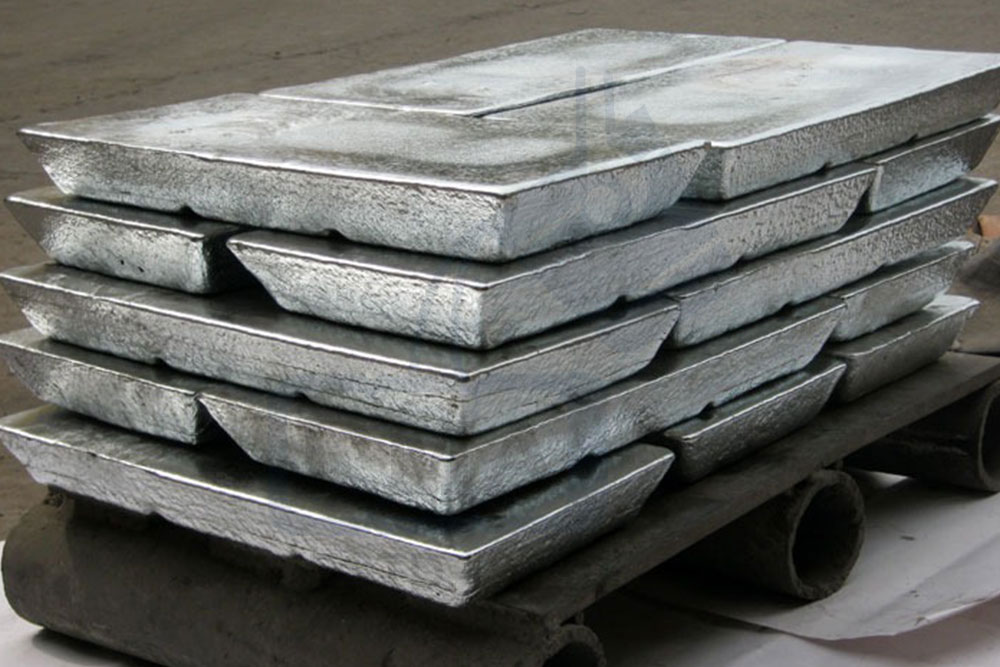We manufacture a full range of Zinc alloys for the zinc die-casting industry. For folks who are not aware the letters in the word ZAMAK/MAZAK stand for Zinc, Aluminium, Magnesium, and Copper which forms the basis for this series of alloys.

Zinc’s high strength and hardness lends itself to many solutions and it’s the ideal alternative to machined, pressed, stamped, and fabricated components.
| Alloy | Al % | Mg % | Cu % | Fe % | Pb % | Cd % | Sn % | >Ni % | Zn % |
|---|---|---|---|---|---|---|---|---|---|
| Zamak 2 | 3.9 - 4.3 | 0.025 - 0.05 | 2.6 - 2.9 | 0.075 | 0.003 | 0.003 | 0.002 | - | BAL |
| Zamak 3 | 3.9 - 4.3 | 0.025 - 0.05 | 0.1 | 0.075 | 0.003 | 0.003 | 0.002 | - | BAL |
| Zamak 5 | 3.9 - 4.3 | 0.03 - 0.06 | 0.75 - 1.25 | 0.075 | 0.003 | 0.003 | 0.002 | - | BAL |
| Zamak 7 | 3.9 - 4.3 | 0.01 - 0.02 | 0.1 | 0.075 | 0.003 | 0.002 | 0.001 | 0.005 - 0.02 | BAL |
| ZA 8 | 8.0 - 8.8 | 0.015 - 0.03 | 0.8 - 1.3 | 0.1 | 0.003 | 0.003 | 0.002 | - | BAL |
| ZA 12 | 10.5 - 11.5 | 0.015 - 0.03 | 0.5 - 1.25 | 0.075 | 0.003 | 0.003 | 0.002 | - | BAL |
| ZA 27 | 25.0 - 28.0 | 0.010 - 0.02 | 2.0 - 2.5 | 0.1 | 0.003 | 0.003 | 0.002 | - | BAL |
Zinc Alloy 2, also known as Zamak 2 (ASTM AC43A), is the highest strength and hardness of the Zamak family. This alloy has excellent casting characteristics including:
A higher creep performance than other Zamak alloys.
Excellent damping capacity and vibration attenuation in comparison to Aluminium die-cast alloys.
High strength and hardness levels after long-term ageing The alloy ages better than the other alloys in the group in terms of tensile strength retention and dimensional stability, but it loses impact strength and hardness. These restrictions mean that ZA 2 is only utilized when ZA 3 or ZA 5's strength or hardness is insufficient for the intended usage. Only when ZA 5 cannot offer appropriate strength or when additional hardness is necessary is this alloy advised.
Zamak 3 (ASTM AG40A), or Zinc Alloy 3, is the most widely used in India and overseas and is usually the first choice when considering zinc for die casting for the following reasons:
Excellent balance of desirable physical and mechanical properties.
Superb castability and long-term dimensional stability.
Excellent finishing characteristics for plating, painting, and chromate treatments.
Excellent damping capacity and vibration attenuation in comparison to Aluminium die-cast alloys When it comes to die-casting, Zamak 3 is the standard by which other zinc alloys are rated. ZA 3 is the most popular zinc casting alloy, making up around 85% of all zinc casting tonnage. The simplicity with which it can be electroplated contributes to the alloy's popularity. Alloy ZA-8, ZA-12, or ZA-27 should be taken into consideration when qualities that are equivalent to or better than those of Aluminium alloys are required.
Zamak 5 (ASTM AC41A) or Zinc Alloy 5, is the most widely used in Europe:
It has a higher copper content than Zamak 3, which results in higher strength.
It has less ductility (decreased elongation) than Zamak 3
Designers must keep in mind that this reduction in ductility can affect formability during secondary operations such as bending, riveting, swaging, or crimping operations.
Because of the wide availability of Zamak 3, component engineers often strengthen components by design modifications instead of using Zamak 5
When a measure of tensile performance is needed, Zamak 5 castings are recommended.
• Zamak 5 is more readily plated, finished, and machined than Alloy 3 The chemistry of ZA 5 is similar to that of ZA 3, except for a 1% addition of copper
ZA-8, or zinc Aluminium alloy, contains significantly more Aluminium than the Zamak group of alloys. ZA-8 contains approximately 8.4% Aluminium and is the only ZA alloy that can be hot-chamber die-cast, an important consideration when selecting a material for a component:
ZA-8 has excellent finishing and plating characteristics and was originally developed as a permanent mould alloy.
It is ideal for decorative applications.
Although it does not have as good casting characteristics as the other zinc alloys, it offers significantly improved strength, hardness, and creep properties.
In terms of mechanical performance, ZA 8 has the highest creep strength of any zinc alloy and the highest strength of any hot-chamber die-cast zinc alloy Despite having a very high Aluminium content, it is still possible to electroplate it using standard 0' plating methods.
ZA-27, or zinc Aluminium alloy, contains significantly more Aluminium than the Zamak group of alloys. The number 27 represents the approximate percentage of Aluminium:
ZA-27 has the highest Aluminium content, the highest strength, the highest melting point, and the lowest density of the ZA group.
This zinc alloy exhibits excellent bearing properties, which allow bearings to be designed for the casting of some applications.
• Its relatively high casting temperature requires the cold-chamber process It also has the best wear characteristics and is among the most creep resistant. It is, however, the hardest to electroplate. Heat treatment can be used to increase the ductility of sand-cast parts. When ordinary zinc or Aluminium alloys are insufficient for high-performance applications, ZA-27 is specified, just like ZA-12. Both of these ZA alloys can frequently be used in place of Aluminium with currently available tooling. Additionally, they can be constantly and centrifugally cast for machine parts and bearings.